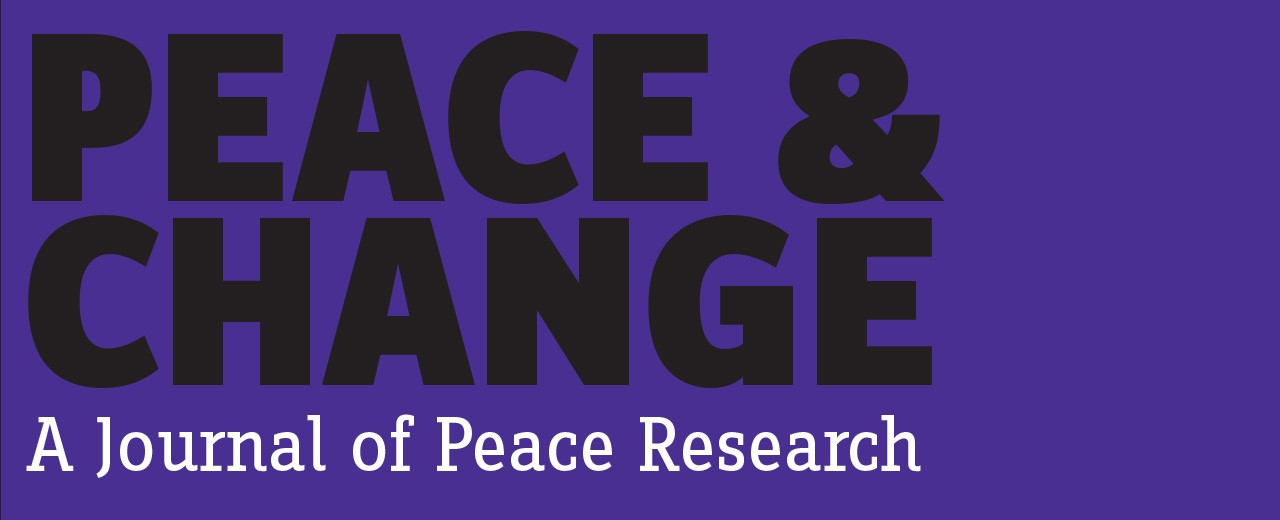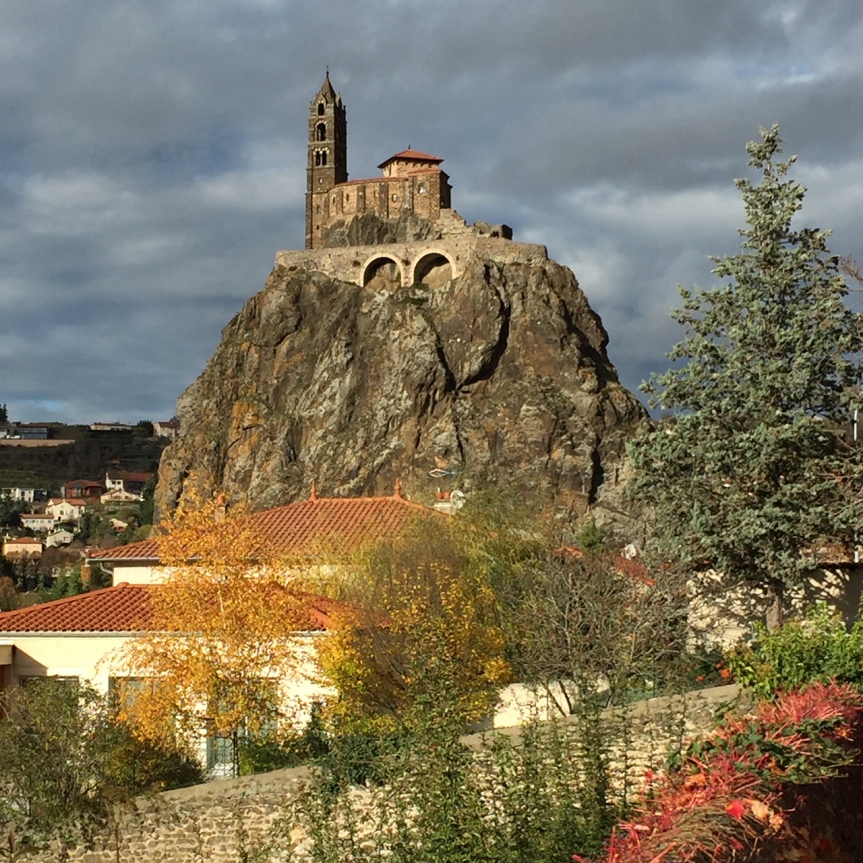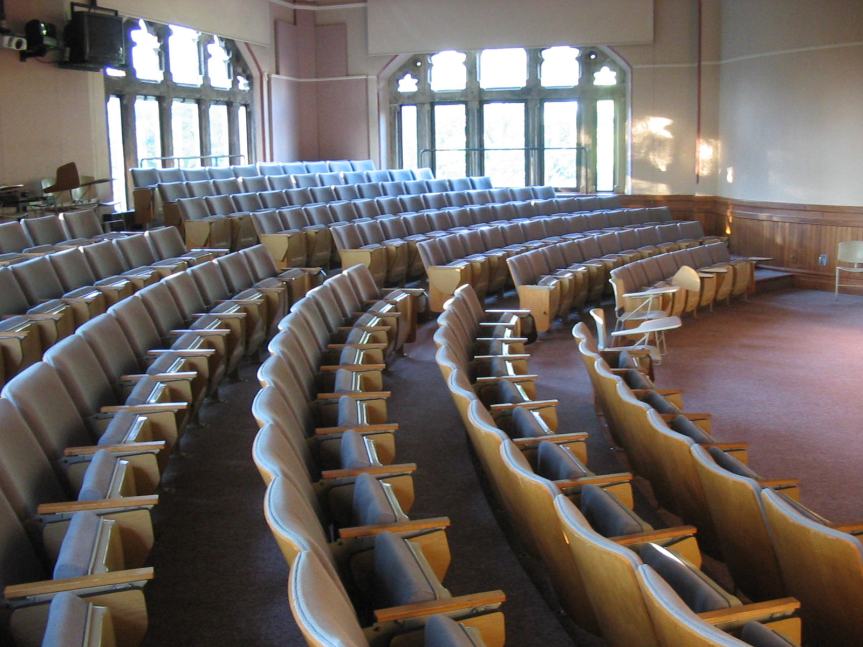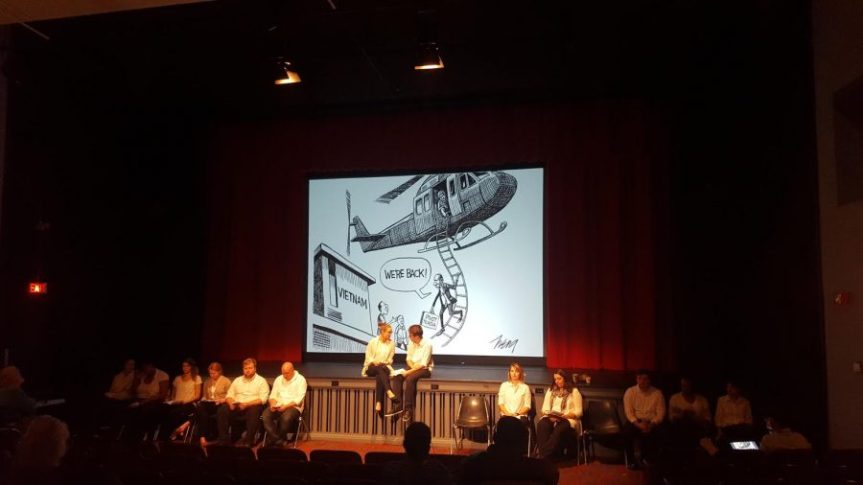by Carol K. Coburn and Ken Parsons
Introduction
From 2015 to 2019, the global Sisters of St. Joseph created, developed and taught a curriculum on “Cultural Diversity and Conflict Management.” The U.S. Federation of the Sisters of St. Joseph received a major grant to address the growing cultural diversity and conflict present both within their global congregations as well as the congregation’s educational, healthcare, and social service ministries which include almost 60 countries on five continents.[1] The grant was to address twenty-first-century issues of ethnic tension and local, regional, and global conflict. For example: In some countries in Africa, St. Joseph sisters found themselves in novitiates with sisters from warring tribes. In the Middle East, sisters’ schools had faculty, students and parents from predominately Muslim families. In India, young St. Joseph sisters came together in large living situations, working with diverse age, religious, and ethnic populations, speaking multiple languages. To strengthen global sisters’ networks and religious identity and to better serve constituents, the sisters’ project aimed to create and utilize a curriculum that would provide knowledge, skills, and spiritual identity and integration through the understanding and practice of cultural diversity, nonviolent communication, and conflict resolution. As project consultants and evaluators, Professors Ken Parsons and Carol Coburn from Avila University, a Sisters of St. Joseph institution, were asked to collaborate and consult on the curriculum and evaluate its success. Ultimately, this four-year, multilingual project documented successful outcomes and strategies used on five continents.
The historical and cultural foundations of the Sisters of St. Joseph and Catholic sisters’ global outreach, provides context on why they chose to advance their ministry in 2015, by adapting to the new realities of the twenty-first century. For St. Joseph sisters, this adaptation to the changing times has been an ongoing theme – continuing to serve the “dear neighbor without distinction” – first documented in their seventeenth-century founding documents and later Constitutions. Also, the reality is that over the last half-century, the numbers of new sisters have declined in North America, Europe, and Latin America and are growing in Africa and Asia (particularly India), changing the global landscape for the religious congregation. Additionally, the St. Joseph sisters wish to become a more integral and united global community and needed to take measures to understand cultural difference and global realities faced by their 10,000 sisters many who are ministering in extreme areas of ethnic and religious conflict on a daily basis. Finally, the historical power dynamics of North American and European influence in women’s congregations are giving way to a new reality where leadership and influence are shifting to Africa and Asia.
Women, Religion and Peacebuilding
Catholic sisters are only part of the growing numbers of women worldwide involved in peacebuilding. Until more recent times, women have been portrayed only as victims of war and social justice inequality. For over a decade, the United States Institute of Peace (USIP), has documented the important role that women and religion play in negotiating, securing, and maintain peace in global conflicts. The USIP researchers and website include online teaching units, micro-courses, speakers, and publications touting the importance of gender and religion as mitigating factors for success. History has shown that civil resistance is most successful when women are engaged in the peace process. Additionally, including women at the conference table and activism in the streets lowers a country’s propensity for conflict when paired with higher levels of gender equality. “Research shows that when women effectively influence a peace process, it’s more likely that an agreement will be reached, implemented and sustained. . . . Inclusion is not only the right thing to do, it’s the smart thing.” [2]
Other scholars who have researched gender and peace support the importance of a “gendered” peace initiative. In her article, “What Sex Means for World Peace,” Valerie M. Hudson uses empirical data to demonstrate that the “best predictor of a state’s stability is how its women are treated.” A more inclusive, equal environment for women promotes peacebuilding.[3] Likewise, researcher Severine Austesserre documents the often ineffectiveness of only male elites or UN interveners at the peace table. She states, “The problem is that currently we are always focusing our efforts on the top, on political leaders, on [male] elites, and we very rarely support peace at the grassroots.” She tells the stories of the “ordinary yet extraordinary individuals and communities that have found effective ways to confront violence.”[4]
Because the Catholic sisters are religious women, many operating in their home culture and country, they have an insider’s view; and as workers in education, healthcare and social service are known and trusted by those in their communities. This makes them important players in peacebuilding projects.
Historical Background and Context
To adequately understand this project, it is important to briefly put Catholic sisters’ work into a larger cultural and historical context. The Sisters of St. Joseph congregation was founded around 1650 in Le Puy, France. As an apostolic community who worked in private and public settings, they immediately began to work with the poor and sick, as well as providing education for girls. Working with French society’s marginal populations, St. Joseph sisters provided care and succor maintaining hospitals and schools for those most in need.[5]
This pattern continued well into the mid-twentieth century but dramatically changed in the 1960s, when the Second Vatican Council met in Rome and mandated changes to modernize the global Church. In the United States, the ministries of all Catholic sisters exploded into a vast myriad of programs and services focusing on the marginalized of society. Sisters became activists in civil rights, women’s rights, anti-war movements, sanctuary movements for Central American immigrants, among many other signature social justice issues of the twentieth century. Sisters have been avid supporters and lobbyists for free trade, water and land management issues for the poor, ecology, micro-financing, HIV/AIDs assistance, and anti-violence campaigns to protect women and children across the globe. Attempting to take more active responsibility for the investment practices of national and global corporations, sisters also participated in protests and asserted power as stockholders and investors in multi-national corporations involving issues such as worker’s rights, healthcare reform, environmental sustainability, and human trafficking among many other pressing issues across the globe.[6] By the twenty-first century over 30 orders of women religious, including the Sisters of St. Joseph, had accredited NGO’s recognized by the United Nations, helping to create and work toward the U.N. Millennium Development Goals which included gender equality and women’s empowerment, education, healthcare, poverty, environmental sustainability, and global partnerships and more recently the U.N. Sustainable Development Goals for 2030. This United Nations NGO designation represents 100,000 sisters from 200 congregations in 177 countries.[7]
In her chapter on Catholic women and peacebuilding in the twenty-first century, scholar Maryann Cusimano Love describes global “advocacy networks” where Catholic nuns are plugged-in to social networks, the Internet, and are adept at using decentralized networks and participatory leadership, to gather and communicate information. This provides sisters an opportunity to put out a call worldwide describing and assessing the current situation on the frontlines in hot spots such as Sudan or Congo among many others. In reality, nuns’ global access was valued long before electronic technology made the world smaller. In the 1980s, when long-time Boston politician and then Speaker of the U.S. House of Representatives, Thomas “Tip” O’Neill, was asked how he identified the burning issues from around the globe, he said, “Follow the nuns and you’ll never go wrong. . . . They have people on the ground and they know what is really going on in areas of conflict.”[8]
In light of this context, this twenty-first-century project continues this legacy of global presence and service. It is significant because it expands knowledge, skills, and spirituality already present within St. Joseph ministries and religious life. Given the history of intercultural relations, multilingualism, and activism, this project deepens and extends the sisters’ myriad of knowledge and experience regarding conflict and its resolution, further developing skills for understanding nonviolent communication, cultural diversity, and difference within the St. Joseph global community.
Project Design Overview
Over a ten-day period in October in 2015, the global St. Joseph Design Team, consisting of nine sisters (from eight countries) and two university consultants, worked to create a teaching curriculum on “Cultural Diversity and Conflict Management.” It was a “train the trainer” program and live, simultaneous interpretation was provided in four languages: English, Spanish, French and Portuguese. The Design Team members would create the goals, objectives, and essential elements of the program, design the curriculum, research content sources, study and debate pedagogical strategies, and ultimately two or three sisters (Design Team members) would team-teach the ten-day curriculum to approximately 125 sisters from five continents. Two Avila University faculty would attend each session and evaluate the project’s effectiveness. The training program would be taught five times over a two-year period between May 2016 and May 2018, ultimately bringing 122 St. Joseph sisters to Le Puy, France, for training in the curriculum. Here the sisters developed pedagogical skills necessary to return to their own countries and cultures to teach an additional 75 sisters and lay persons the concepts and strategies of this peacebuilding, educational program. Ultimately, the program could potentially touch the lives of approximately 5000 people.
Curriculum and Methodology
The Design Team based the curriculum and methodology of the program on three essential elements: 1) Nonviolent Communication and Conflict Resolution; 2) Critical Engagement with Difference; and 3) Role of Empathy for Understanding and Right Relations Within a Diverse Community. Around these three themes the Design Team developed workshop content and methodologies asking a central question: “What do you want sisters-participants to leave with after their ten days in Le Puy”? The Design Team created materials and content that provided knowledge and skills integrated with the congregation’s heritage and spirituality. The focus of the grant was to teach 125 sisters-participants who were in early stages of religious life (postulants, novices, newly professed) and those sister-formators who mentored them. Strategies and methods included, but were not limited to: readings, real-world case studies, experiential learning, discussions (face-to-face and online), role-playing, journaling/reflections, collaborative projects, listening circles, videos, performance activities, personal narratives, and study/thought questions. The curricular template was not meant to be a one-size-fits-all document. It had to be focused, yet agile, to work with diverse sisters and cultures within the St. Joseph congregation. During the ten-day training sessions in Le Puy, between May 2016 and May 2018, sisters from 27 countries participated, representing four distinct linguistic groups: Spanish, French, Portuguese and English. Sister-teachers had to be flexible and innovative to teach curriculum in 5 separate sessions with the 25 sisters in each representing a wide variety of cultures and backgrounds. By the seventh day of training, the participating sisters began to work individually and in small groups to begin creating their own workshops for their sisters and lay persons in their home settings.
Evaluation
As evaluators, we designed four assessment tools to measure program effectiveness for the St. Joseph sisters participating: Personal Background Questionnaire, Pre-Evaluation, Post-Evaluation, and Six-Month Follow-Up Questionnaire. The Background Questionnaire provided important demographic (age, ethnicity, education, years in religious life, etc.), educational, and work/ministry data on each sister. The Pre-Evaluation combined quantitative and qualitative questions assessing the participants understanding, attitudes, and ideas about conflict, cultural diversity, ethnic tensions, and non-violent communication strategies. This was completed weeks to months before the course and before any reading materials were sent to the participants. The Post-Evaluation was conducted immediately on the final day of the ten-day workshop. It included some of the same questions, quantitative and qualitative, as the Pre-Evaluation as a way to measure attitudinal and/or knowledge change (or lack thereof) after participating in the course. It also allowed for comments on strengths, weaknesses, and attitudinal thoughts about the workshop as well as sisters’ personal reflections on the ten-day experience. The Sixth-Month Follow-Up Questionnaire was completed six months after completing the course and attempted to gather data on who, when, and where they taught the curriculum in their own local settings. It also included questions about their own attitudes and feelings about teaching the curriculum and how they measured their own success and well-being within their communities.
Results
The qualitative and quantitative data from this project is voluminous so we have provided an overview based on our four evaluative tools and our own direct observations and analysis to profile many of the key components of the research.[9] The background questionnaire provided important demographic information about the sisters who attended the workshop. Demographically, the 122 sisters provided an interesting profile. Seventy-one percent of participants were between the ages of 18 and 49. This emphasized the projects desire to educate young, newly professed sisters and/or those who were in charge of their formation. Ethnically, 34% identified as Asian Indian, 17% African. Overall half of all participants came from Asia or Africa which were the two focus areas for the grant. Both continents represented the locations of the fastest growing numbers of new sisters in each of the five sessions. Seventy percent spoke two languages or more, again most of those coming from Asia or Africa, which included tribal, regional, and national languages. Approximately 70% of the sisters had completed some university education and 27% had some graduate education almost exclusively in healthcare, education, and social service occupations. Approximately 72% of sisters had been in religious life between 1-24 years, many in Asia and Africa entering as adolescents.
Pre and post evaluation data were extensive and varied with questions focused on attitudes and knowledge about cultural diversity and conflict issues. The quantitative (5-point Likert Scale) and qualitative data (sisters’ comments) are both important to the process and document overall positive outcomes. Sisters reported that they were less fearful of conflict, felt more capable to resolve conflict, and less fearful of cultural diversity within their communities. They reported they better understood strategies for nonviolent communication and valued their knowledge about cultural diversity to better live in community and work successfully within their ministry. Interestingly, they also reported that they better understood whether conflict arises from cultural differences or those inherent in religious life. This was a critical component of the grant because this is an important distinction for culturally-diverse women living closely in community in sometimes highly stressful situations around the world. Some of the sisters’ written comments also reflect the purpose and significance of the workshop for these sisters.
The sisters’ post-evaluation comments give the quantitative data “life” and in some cases reflect personal situations. One sister wrote that she hopes to use these strategies on conflict in her own community, “[H]ad I not learned this I may have added to the conflict.” Another wrote, “ I feel that I am leaving [the workshop] with a lot of tools [or strategies] and I intend to use them.” One spoke of understanding that “multicultural, intercultural is a strength” not a problem. And a sister in an African novitiate simply wrote, “I have a community of six members and five are from different countries. . . . [This training will help me] work with current sisters in conflict.”
The six-month follow-up questionnaire provided information and insights about how the Le Puy-trained sisters felt after going back to their local settings and becoming Second Generation teachers sharing the curriculum with other sisters and lay peoples.[10] The Second Generation of sisters quickly understood that this curriculum could go far beyond training only younger or newer sisters in the community. For example: In November 2017, three St. Joseph sisters from three different congregations in Brazil came together in Northeast Brazil in Cicero Dantas, Bahia. They taught over 50 men, women, and youth between the ages of 18 and 80 in a three-day workshop. A sister remarked that most participants were members of local “settlements and camps of people who daily struggle to find a place to live and work.”[11] The participants included teachers, students, housewives, village leaders, senior advisers, and religious sisters.
Not an original focus in the grant, training and working with lay people within their local ministries was an excellent decision (made by the sisters). Those trained in Le Puy saw the need and the importance of utilizing and demonstrating the adaptability of the curriculum by teaching local lay people and other groups. The data from the Second Generation programs in their home countries document the sisters’ dedication to create these workshops and their unique approach to making the curriculum their own. The aggregate data show that participants in Second Generation workshops varied from locale to locale. Although the curriculum is still being taught in workshops, as of November 2019, participants included sisters (59%), lay people (23%), educators (9%), and students/adolescents (10%). The workshops were taught in over 25 countries, South America provided 33% of all workshops, Asia 31%, and Africa 17% of the total number of workshops six months after each Le Puy workshop. Adapting to the lives of the people, Second Generation sisters taught workshops tailored for their populations who in most cases had very little “free” time. The length of the workshops varied from 2-3 days to 9-12 days. Sixty-one percent of the workshops were 2-3 days in length, and 25% were 4-5 days in length. Only 11% of the workshops lasted between 6-12 days. As of November 2019, sisters have reported 120 workshops, involving over 3200 people. This is an underestimation because sisters have taught and are continuing to teach the curriculum so we do not have data for 2020.
Implications and Analysis
The success of the Cultural Diversity and Conflict Management workshops were demonstrated in both quantitative and qualitative assessment measures providing a road map for future research and program development, particularly for religious congregations of women operating in a global milieu. In a world overwhelmed by conflict, locally and globally, women religious are in a unique position to reach a variety of constituencies including members of their own congregations and the lay people to whom they minister.
Although not part of the original grant, the sisters created their own diverse groups of participants including combinations of religious women and lay people in many of their Second Generation programs in their home nations and communities. Working with the needs in their local communities, sisters adapted the curriculum for all ages, genders, religious, lay, and local NGO groups hoping to learn new strategies for nonviolent communication and conflict resolution.
The success of the project goes beyond curricular outcomes and evaluations. Other factors are important to holistically explain the sisters’ effectiveness as teachers and peacemakers. Their personal, educational, and religious backgrounds provided a unique workforce and presence in global peacebuilding. These include six critical factors for success, particularly significant in sisters’ interactions with people in their local ministries.
- Sisters effectively identified the needs in both design and teaching, avoiding a formula or an implication that one-size-fits-all
- Sisters adapted their curriculum to the local culture, including those participants outside of religious life who are necessary and important to the peacebuilding process
- Sisters’ networks are vast and they are trusted and respected members of the local communities – before beginning the workshops they had already established credibility with the local populations
- Sisters’ knowledge and skill sets reinforced and helped ensure success
- Sisters’ foreign language proficiency enhanced outreach to a variety of populations
- Sisters’ advanced education enhanced their ability to think critically, understand learning styles, and blend the curriculum with experiential learning opportunities and activities
Although not an explicit part of this grant program, three additional and important concepts stand out when reflecting on the successful outcomes and implications for the future; this includes the importance of sisters’ understanding the concepts of interculturalism, intersectionality, and transnational activism. The Design team and sister-instructors realized – very early on – that they were witnessing and experiencing interculturalism within the workshops in Le Puy. Interculturalism refers to “support for cross-cultural dialogue and challenging self-segregation tendencies within cultures. Interculturalism involves moving beyond mere passive acceptance of a multicultural fact of multiple cultures effectively existing in a society and instead promotes dialogue and interaction between cultures.”[12] With 25 sister-participants in each of the five sessions in Le Puy, interculturalism was an essential component. Even in sisters’ four linguistic groups, intercultural interactions permeated the workshop. For example, the French linguistic group included sisters from Haiti, France, and multiple countries in West and Central Africa as well as Madagascar. They shared the language but also shared a need for interaction and at times blend their cultural backgrounds within identity and diversity.
Additionally, sisters also understood the importance of intersectionality.[13] Feminist scholars stress the importance of intersectionality as an important concept when analyzing women’s lives. Race, geography, religion, ethnicity, age, class, and other factors do not exist in isolation – they interface and overlap in the lives of all women. Women’s lives and identities embrace a myriad of cultural, gendered, and social imperatives providing a complex matrix. In fact, amid the Le Puy trainings, sisters themselves often discussed the nuances of their own identities: religious, gender, ethnic, racial, and class intersectionality. The global sisters in this study, as well as the population they minister to, cross many boundaries in their intersectional tension and identities. Because most sisters live with the population they serve, and in many cases come from the population they serve, they have a unique perspective.
Finally, Donatella della Porta and Raffaele Marchetti, authors of the article, “Transnational Activism and the Global Justice Movement,” document the importance of a transnational approach to peacebuilding. They write: “Transnational activism entails transnational actors. . . . [including those in] global civil society, international non-governmental organizations [NGOs], transnational social movement organizations [or] global justice movements . . .”[14] In much of the world, this is the daily experience of many Catholic sisters. Utilizing this definition, we would argue that Catholic sisters have been involved in transnational work for decades. This approach and understanding are a necessary ingredient to reducing conflict, locally and globally, and ultimately peacebuilding. Understanding the importance of gender and religion to global peace and justice, editors Susan Hayward and Katherine Marshall recently published, Women, Religion, and Peacebuilding: Illuminating the Unseen, an anthology on peacebuilding by Christian, Muslim, and Jewish women. Using the resources and support of the United States Institute for Peace (USIP), these real-world, case studies came from the Philippines, India, Nigeria, Israel, Bosnia/Herzegovina, and Honduras. This USIP research documents the effectiveness of working with women in global peacebuilding. Because of their years of onsite observation and networking, the work and effectiveness of Catholic sisters were an important component of that conversation.[15]
Consequently, for these reasons this unique, four-year grant is important and why we believe the curriculum has global applications for further peacebuilding by Catholic sisters. The grant and program are not perfect, it is not universal, it is not a one-size-fits-all solution to peacebuilding. However, it is at the very least, a useful template for peacebuilding, particularly for congregations of women religious, who have historically adapted to the world as they find it – trying to make it better.[16]
In the next phase of this project, Avila University will house the archives and all materials from the curriculum project. We hope to create a website and online presence providing access for other global religious congregations to utilize and adapt the template for their congregational and ministerial needs. These needs could be identified by a variety of religious congregations’ NGOs and UN networking to support individual congregations and collaborative programs on Cultural Diversity and Conflict Management – needed throughout the world. Additionally, Avila University and a St. Joseph sister, trained in Le Puy, developed and piloted an English online version of the curriculum. In light of the on-going Coronavirus world pandemic, online work will become more important and necessary in the immediate future. Not always a good or possible option for less developed countries, the online workshop appears to be very successful for those who have the internet infrastructure with opportunities to learn, discuss, and reflect on the curricular materials. Avila University hopes to provide online resources and workshops in five languages (Spanish, French, English, Portuguese, Italian) for religious congregations whose sisters have the technological infrastructure to benefit from online training in peacebuilding. The Sr. Martha Smith Archives and Research Center at Avila University will preserve all grant materials and we hope to establish a Cultural Diversity and Conflict Management website that will serve as an internet portal where digitized grant materials can be accessed for use by other religious congregations to adapt and utilize across the globe. With approximately 700,000 sisters living and working worldwide, that’s a lot of “boots on the ground” for peacebuilding.[17]
Notes
[1] The authors would like to thank the Conrad N. Hilton Foundation for funding this four-year project and for their understanding of its importance. We would also like to thank Sister Patty Johnson CSJ for her vision, support, and encouragement along the way.
[2] Susan Hayward and Katharine Marshall eds., Women Religion and Peacebuilding: Illuminating the Unseen (United States Institute of Peace Press, 2015). Also, the USIP website https://www.usip.org/ provides extensive research for research, teaching, and online activism. The quote is from Norway’s ambassador to the U.S., Kare R. Aas taken from USIP’s article “Women and Peace: A Special Role in Violent Conflict,” by Fred Strasser (March 18, 2016), 1. See also two excellent documentaries by Abigail Disney and Gini Reticker, Women, War & Peace (PBS 2011) and Women, War & Peace II (PBS, 2019).
[3] Valerie M. Hudson, “What Sex means for World Peace,” https://foreignpolicy.com/2012/04/24/what-sex-means-for-world-peace/ (April 24, 2012). Also see the full study in her book, Sex and World Peace, co-authored with Bonnie Ballif-Spanvill, Mary Caprioli, and Chad F. Emmett (New York: Columbia University Press, 2014).
[4] Severine Autesserre, “On the Frontlines of Peace: An Insider’s Guide to Changing the World,” Keynote Address at the Kroc Institute for International Peace Studies, University of Notre Dame (November 9, 2019). In 2021, her forthcoming book with the same title will be available through Oxford University Press.
[5] For an overview of the Sisters of St. Joseph from their roots in 17th century France until early twentieth-century America see Carol K. Coburn and Martha Smith, Spirited Lives: How Nuns Shaped Catholic Culture and American Life, 1836-1920, (Chapel Hill: University of North Carolina Press, 1999).
[6] For the best up-to-date information on the transnational activities of women religious see the websites of religious congregations. Most have a “social justice” link that gives past and present networks and activities. Also, see www.globalsisterreport.org – weekly online report of sisters’ activities from across the globe.
[7] Kelly Litt, “Catholic Sisters at the UN: Bringing the moral voice to the debate,” in Global Sisters Report www.globalsistersreport.org June 29, 2015.
[8] Maryann Cusimano Love, “Catholic Women Building Peace: Invisibility, Ideas and Institutions Expand Participation,” in Women, Religion, and Peacebuilding, 64. The quote from Tip O’Neill was also taken from this source from Love’s interview with St. Joseph Sister Janet Mock, December, 2011.
[9] All quantitative and qualitative data on the sisters and the grant is being archived at the Sr. Martha Smith Archives and Research Center, Avila University, Kansas City, Missouri.
[10] “Second Generation” is the term we assigned the 122 sisters who trained in Le Puy and returned to teach in their own countries. The “First Generation” are the nine sisters on the Design team who were the instructors for the five workshop-training sessions in Le Puy.
[11] Excerpt from “Report to Evaluators” from Sr. Griselda Morales Martinez, Project Director the “Cultural Diversity and Conflict Management” grant, November 2017.
[12] Ibanez B. Penas and Carmen Lopez Saenz, Interculturalism: Between Identity and Diversity (Bern: Peter Lang AG, 2006), 15.
[13] There are a variety of resources and articles that discuss this concept including, Kimberly Crenshaw, “Mapping the Margins: Intersectionality, Identity Politics and Violence Against Women of Color,” Stanford Law Review 43:6 (July, 1991), 1241-99 and “What Does Intersectional Feminism Actually Mean?” International Women’s Development Agency https://iwda.org.au/ (May 11, 2018) among others.
[14] Donatella della Porta and Raffaele Marchetti, “Transnational Activism and the Global Justice Movement,” www.academia.edu, 428. Also see Sidney Tarrow, The New Transnational Activism (New York: Cambridge Press, 2005). For more on the importance of women in the peacemaking process see the work of documentary filmmaker Abigail Disney, who produced a two-part series for PBS titled Women, War and Peace, Part I (2011) and Part II (2018) describing successful peacebuilding by women in the twenty-first century.
[15] Hayward and Marshall eds., Women, Religion and Peacebuilding.
[16] In an effort to broaden accessibility and information about the project the authors have given presentations in fall 2019 at the Peace and Justice Studies Conference at Canadian Mennonite University in Winnipeg, Canada and the Kroc Institute for International Peace Studies at the University of Notre Dame in South Bend, Indiana.
[17] This 2017 data and many more statistics can be found at the online website for Center for the Applied Research in the Apostolate (CARA) http://CARA.georgetown.edu. (Washington, D.C.)
Carol K. Coburn is a Professor Emerita in Religious Studies and a consultant for the Buchanan Initiative for Peace and Nonviolence at Avila University. She is the author of two books including Spirited Lives: How Nuns Shaped Catholic Culture and American Life, 1836-1920. She has over 30 refereed articles and 40 national/international presentations, most focused on Catholic sisters, social justice, and peacebuilding.
Ken Parsons is an Associate Professor of Philosophy at Avila University. He is also a consultant for the Buchanan Initiative for Peace and Nonviolence and the Director for the Center for Global Studies and Social Justice (2013-2019). He teaches and presents papers at conferences around the world on structural violence, notions of difference, and human rights








